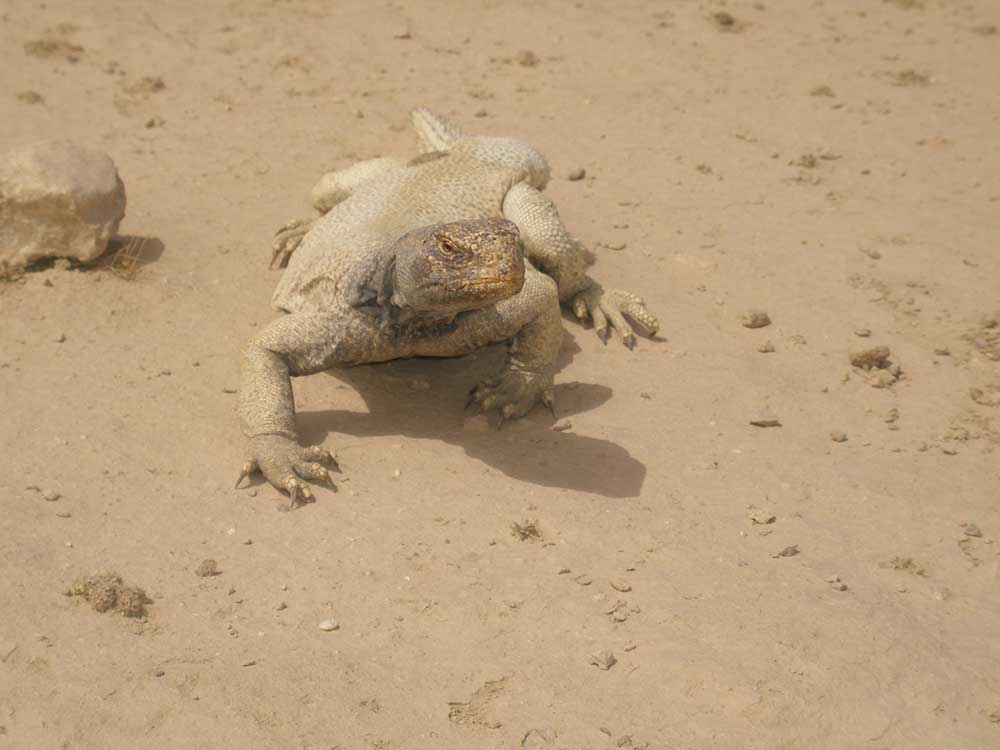
Name: Spiny-Tailed Agama
Scientific name: Uromastyx aegyptia microlepis
Synonym: Lacerta aegyptia
Type: Diurnal lizards
Family: Agamidae
Nature Reserves: Irkaya
Habitat:
The Dhub is the most well known lizard in Qatar. It is the second largest lizard living in Qatar and can reach a total length of about 70 cm. The colour of the body changes with body temperature, with bright yellow colour when body temperature is high (37-40ºC) and grey dark colour when the body is cold. The colour and design also changes with age. Dhubs are active during the day and live in colonies with some having up to forty individuals. They dig burrows that can be 80 cm deep and more than one meter long depending on soil hardness. Burrows can be separated by a distance of about 10 to 20 meters. Some burrows are shared by the male and female. They are mainly herbivorous and consume at least 58 different plant species in Qatar. They also eat insects and have been seen e scavenging. Females lay eggs in burrows
World Distribution:
This species is present in Egypt, Palestine, Jordan, southern Syria, Iraq, Iran, and the Arabian Peninsula. It is also present in some islands of the Persian Gulf (Sirri and Hengman). The subspecies living in Qatar, Uromastyx aegyptia microlepis is also widespread in Saudi Arabia, Oman, Yemen, the United Arab Emirates and Kuwait
Conservation status:
It is classified as Least Concern (LC) on the IUCN Red List
Scientific publications:
This is a well studied species in other countries. We have found 72 international scientific publications about ecology, physiology, behaviour, biogeography and genetics. This is the best studied lizard in Qatar
Similar species:
None in Qatar
Description:
Forskal, 1775







